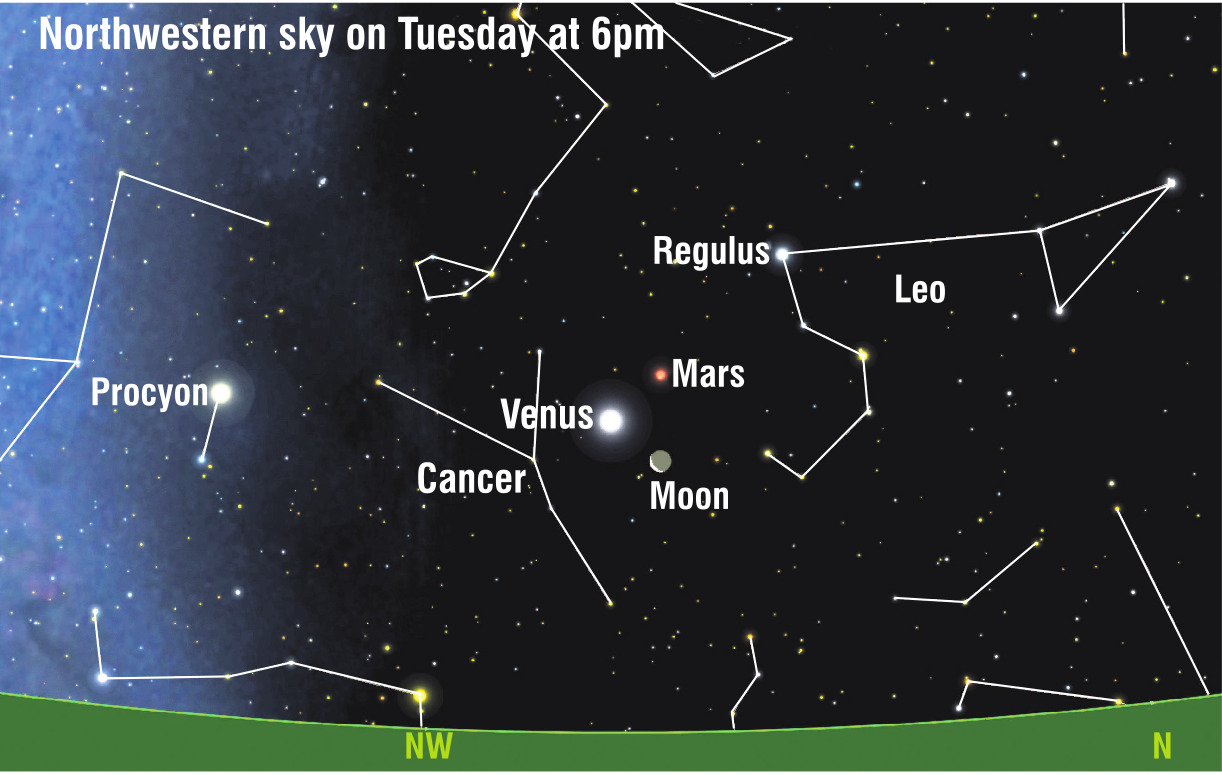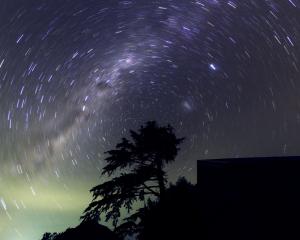
At the winter solstice, the sun’s centre reaches the northernmost point of its annual apparent journey around the sky, which makes for short days and long nights here in the southern hemisphere. Of course, it is not the sun that is moving; it is us. The sun’s apparent motion is caused by the Earth’s orbital voyage around our parent star. From this point on, the nights get shorter as we head towards the spring equinox in September.
Luckily, with the prospect of some long nights, there’s a plethora of planets for stargazers to enjoy when evening twilight ends. Venus can be found on the outskirts of the constellation Cancer. It is so bright that it really can’t be missed.

The planet is brilliant because it is relatively close to us, and its thick cloudy atmosphere efficiently reflects sunlight.
Once you spot Venus, you will have no trouble locating Mars. The red planet is just under five degrees above and to the right of Venus. Mars is, by far, the dimmer of the two. This week Venus shines more than 275 times brighter than its planetary sibling.
On Thursday night, Venus and Mars will be joined by the 3-day-old waxing crescent moon whose "dark" side will be illuminated by ghostly earthshine. The celestial trio will be a fine sight.










